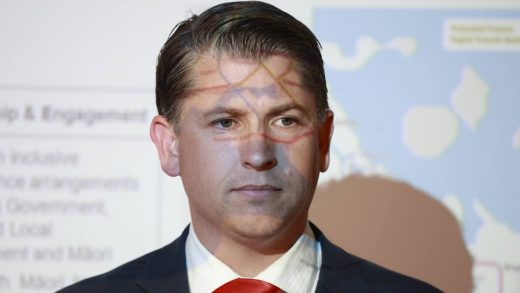
ULAANBAATAR, Mongolia (AP) — With China’s crackdown on religious minorities as a backdrop, Pope Francis joined Mongolian shamans, Buddhist monks and a Russian Orthodox priest Sunday to highlight the role that religions can play in forging world peace, as he presided over an interfaith meeting highlighting Mongolia’s tradition of religious tolerance.
Francis listened intently as a dozen faith leaders — Jewish, Muslim, Bahai, Hindu, Shinto and evangelical Christian among them — described their beliefs and their relationship with heaven. Several said the traditional Mongolian ger, or round-shaped yurt, was a potent symbol of harmony with the divine — a warm place of family unity, open to the heavens, where strangers are welcome.
The interfaith event, held at a theater in the capital, Ulaanbaatar, came midway through Francis’ four-day visit to Mongolia, the first by a pope. He is in Mongolia to minister to one of the world’s smallest and newest Catholic communities and highlight Mongolia’s tradition of tolerance in a region where the Holy See’s relations with neighboring China and Russia are often strained.

According to statistics by the Catholic nonprofit group Aid to the Church in Need, Mongolia is 53% Buddhist, 39% atheist, 3% Muslim, 3% Shaman and 2% Christian.
Later Sunday, Francis was to preside over a Mass in the capital’s sports stadium that the Vatican had said would also be attended by pilgrims from China. One small group of Chinese faithful from Xinjiang attended his meeting at the city’s cathedral Saturday. They held up a Chinese flag and chanted “All Chinese love you” as his car drove by.
The Vatican’s difficult relations with China and Beijing’s crackdown on religious minorities have been a constant backdrop to the trip, even as the Vatican hopes to focus attention instead on Mongolia and its 1,450 Catholics. No mainland Chinese bishops are believed to have been allowed to travel to Mongolia, whereas at least two dozen bishops from other countries across Asia have accompanied pilgrims for the events.
Hong Kong Cardinal-elect Stephen Chow was on hand and accompanied 40 pilgrims to Mongolia, saying it was an event highlighting the reach of the universal church. He declined to discuss the absence of his mainland Chinese counterparts, focusing instead on Francis and the importance of his visit to Mongolia for the Asian church.
“I think the Asian church is also a growing church. Not as fast as Africa — Africa is growing fast — but the Asian church also has a very important role to play now in the universal church,” he told reporters.
Chinese President Xi Jinping has demanded that Catholicism and all other religions adhere strictly to party directives and undergo “Sinicization.” In the vast Xinjiang region, that has led to the demolition of an unknown number of mosques, but in most cases it has meant the removal of domes, minarets and exterior crosses from churches.
The Vatican and China did sign an accord in 2018 over the thorny issue of Catholic bishop nominations, but Beijing has violated it.
___
Associated Press religion coverage receives support through the AP’s collaboration with The Conversation US, with funding from Lilly Endowment Inc. The AP is solely responsible for this content.


